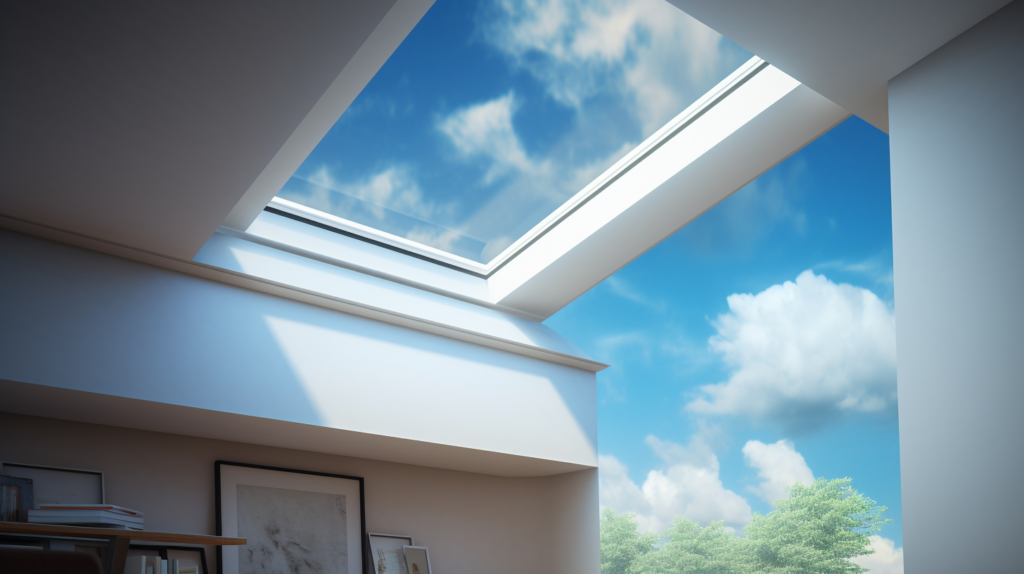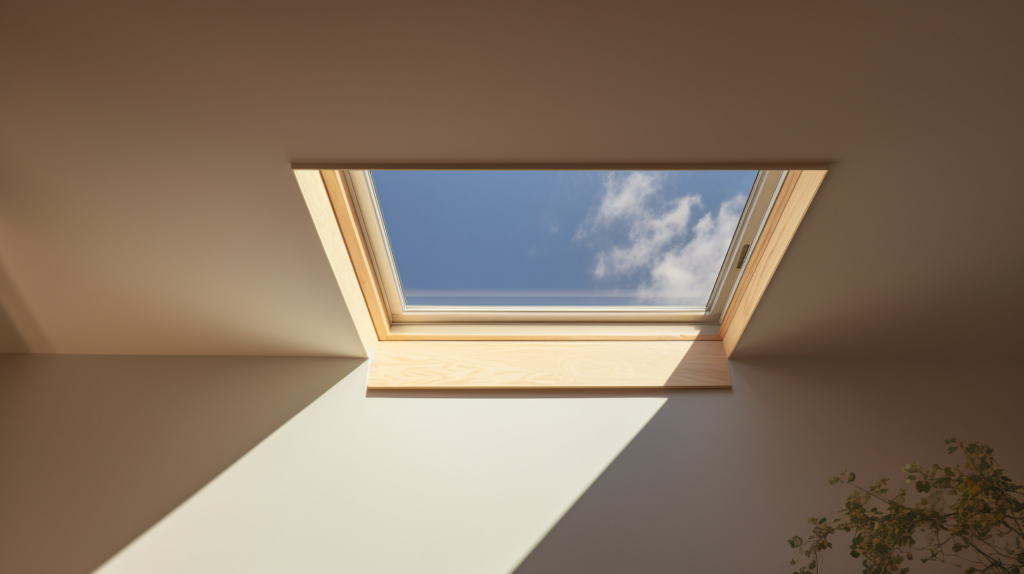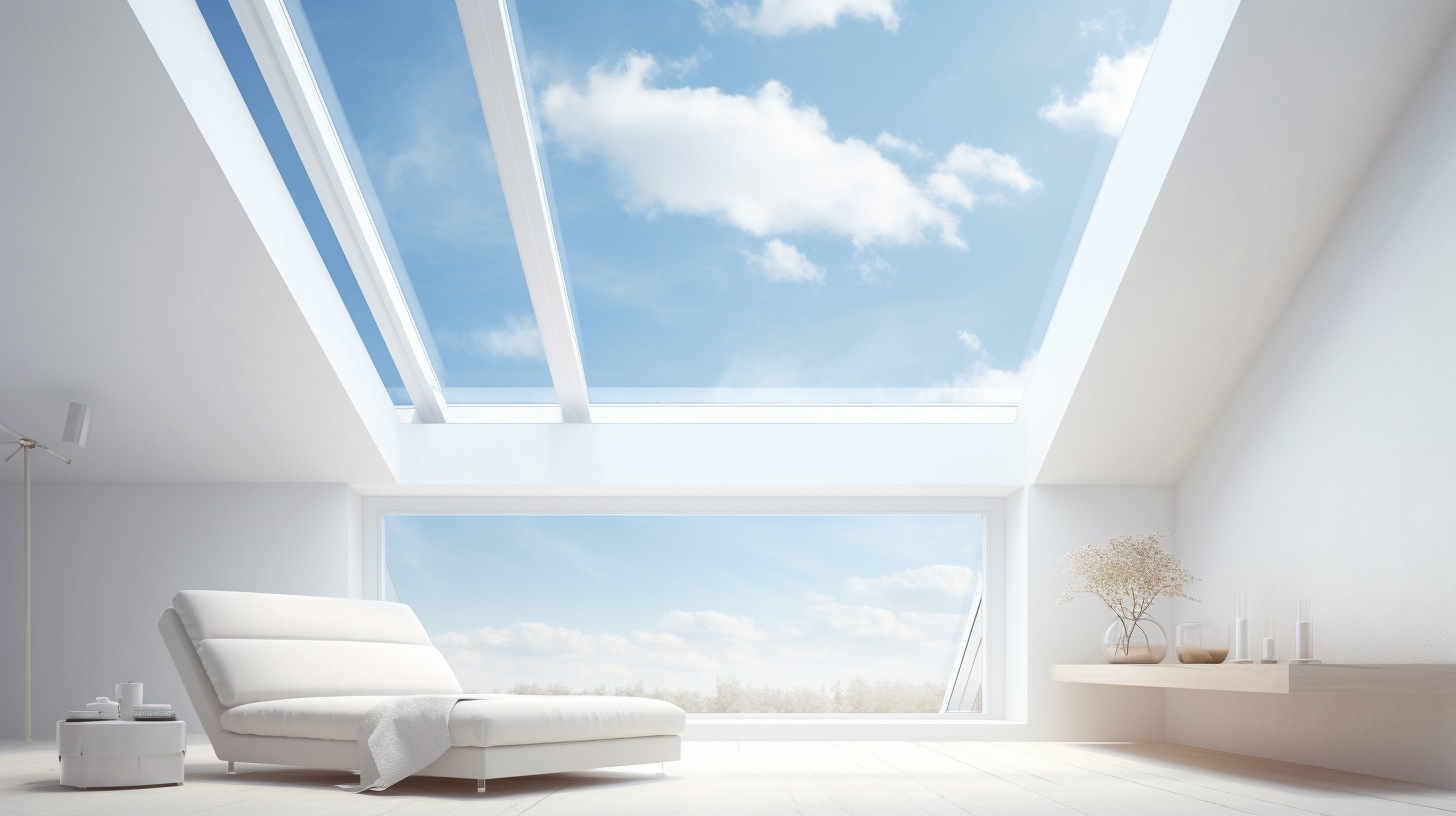Is noise from outside constantly coming in through your skylight and disrupting your home’s peace and quiet?
Adding soundproofing is an easy and effective way to make your skylight window block exterior noise so you can enjoy quiet and privacy.
In this article, we’ll dive into the steps for soundproofing a skylight window to reduce noise.
Why Soundproof Your Skylight?

There are several great reasons why you may want to consider soundproofing a skylight in your home. Reducing noise from coming in through your skylight can make a big difference in comfort.
Skylights are often a weak point acoustically, allowing exterior sounds to easily enter. Soundproofing measures will also contain noises inside your home from transmitting out through the skylight.
Making a skylight more soundproof delivers a number of worthwhile benefits for your space. First, it will reduce outside noise entering from sources like street traffic, nearby construction, overhead planes, loud neighbors and barking dogs.
When your skylight lets in a lot of noise, it can negatively impact your ability to relax, work or sleep. Soundproofing helps block these undesirable noises from intruding through the skylight so your interior space stays peaceful and quiet.
In addition, soundproofing a skylight prevents interior noises like voices, music and TV sound from echoing out if you have high ceilings. Hard reflective surfaces can cause noises to bounce around and exit through the skylight opening.
Adding acoustic insulation will contain sounds inside for more privacy. Sound transmission out can be especially problematic in apartments and condos. Treating your skylight will also reduce exterior echoes that neighbors or passersby may hear.
Making a skylight more soundproof improves privacy and minimizes disturbances from outside noise sources. Unwanted noise intrusions can interrupt activities and make it hard to focus.
Soundproofing creates a quieter, calmer environment for work, reading or conversation. It also enables restful sleep uninterrupted by external noise.
Finally, soundproofing a skylight simply makes the space more comfortable to be in by providing desired quiet.
Steps to Soundproof a Skylight

1. Assess the Existing Skylight

The first step is to examine and measure the skylight to determine the best soundproofing approach. This involves taking note of a few key factors:
Measure the full width, height and thickness of the current glass pane in the skylight. This will ensure you order materials sized correctly later on.
Carefully assess the skylight frame as well to note any areas of cracking, deterioration or openings that may need repair.
Determine if the skylight is fixed or operable. Some skylights are designed to open for ventilation purposes. This will impact the soundproofing methods and materials used. Make sure any ventilation needs are satisfied after modifications.
Identify potential gaps between the frame and the roof opening that may allow noise intrusion. Check the seal of the frame perimeter and note any cracks, holes or separations. Prioritize sealing these potential sound leaks completely.
Consider the main sources of noise bothering you such as traffic,Construction, voices, etc. This will help select the right soundproofing approaches to block those specific noises.
An assessment helps customize the project for optimal noise reduction.
2. Change Skylight Window to a Soundproof Skylight Window

Replacing the existing single pane window with a new soundproof window specially designed to reduce noise transmission is the most effective way to solve a skylight noise problem.
Single pane glass offers very little in the way of soundproofing ability. Switching to an acoustic double or triple pane window will provide significantly more noise blocking.
Start by carefully measuring the current skylight glass width, height and thickness as mentioned in step one. This ensures you order a replacement window that fits properly within the existing frame.
Do thorough research to select a window optimized for noise reduction. Look for double or triple pane laminated glass containing acoustic interlayers designed to dampen sound transmission.
Brands known for excellent soundproof windows include Pella, Milgard, Jeld-Wen and Simonton.
When the new noise reducing window arrives, very carefully remove the original skylight pane, protecting the surrounding roof and frame. Follow the manufacturer’s instructions exactly for proper installation of the replacement soundproofing window.
A proper full perimeter seal is crucial to prevent noise gaps. Use sealants recommended by the window manufacturer and make absolutely sure the new pane is airtight within the frame and roof opening.
The improved noise blocking abilities of the new acoustic window will be very apparent.
3. If Replacing Not an Option, Use Window Inserts

If for some reason it is not possible to do a full window replacement, acoustic laminated window inserts present another option to treat noise coming through a skylight.
These are secondary panes that fit into the existing window frame right against the current glass. Brands like Indow Windows make quality inserts that can help muffle exterior noise.
Window inserts will not provide as much soundproofing performance as replacing the entire window, but are still effective at reducing noise intrusion.
And they achieve significant noise reduction without the process of a full skylight pane removal and installation. Measure carefully and select a properly sized insert to match your window dimensions.
Follow manufacturer instructions closely for proper installation in the existing frame. Make sure the insert forms an airtight seal all around to prevent sound leaks at the perimeter.
Window inserts simply slot into place without permanent attachment or changes to the window itself. Enjoy quieter days and nights with the simple addition of a sound-dampening window insert.
4. Enjoy the Noise Reduction Benefits

Once the skylight soundproofing project is complete, it is time to reap the benefits of a much quieter space. Take note of the significant reduction in bothersome noise coming in from outside the skylight.
Activities will have fewer disruptions, and sleep can finally happen peacefully without external disturbances.
To assess the exact amount of soundproofing achieved, use a decibel meter app before and after the modifications to compare noise levels from the same source. Additional sound absorbing window coverings can augment the treatment if needed in especially noisy environments.
With the tranquil quiet achieved through an insulated skylight, you can focus better, relax easier, and enjoy privacy and uninterrupted sleep. Soundproofing overhead glass allows you to experience the beauty and daylight of a skylight, without the annoyance of unwanted noise.
The improved comfort and seclusion a soundproof skylight provides will be a continual delight.
Conclusion
Installing a soundproof skylight is one of the best ways to reduce noise entering your space from outside. Acoustically insulated skylights prevent disturbances, improve relaxation and concentration, and create privacy.
Replacing the window pane with a specially designed soundproofing double or triple pane model is the most effective method. But window inserts can also mute noise if replacement is not possible.
With some simple soundproofing modifications, your skylight can continue providing beautiful natural light without sacrificing a peaceful environment. Just a few improvements will make a significant difference in reducing noise.
Be sure to completely seal the perimeter and use quality acoustic materials for best results. The benefits of a quiet, tranquil space will make the effort very rewarding.
